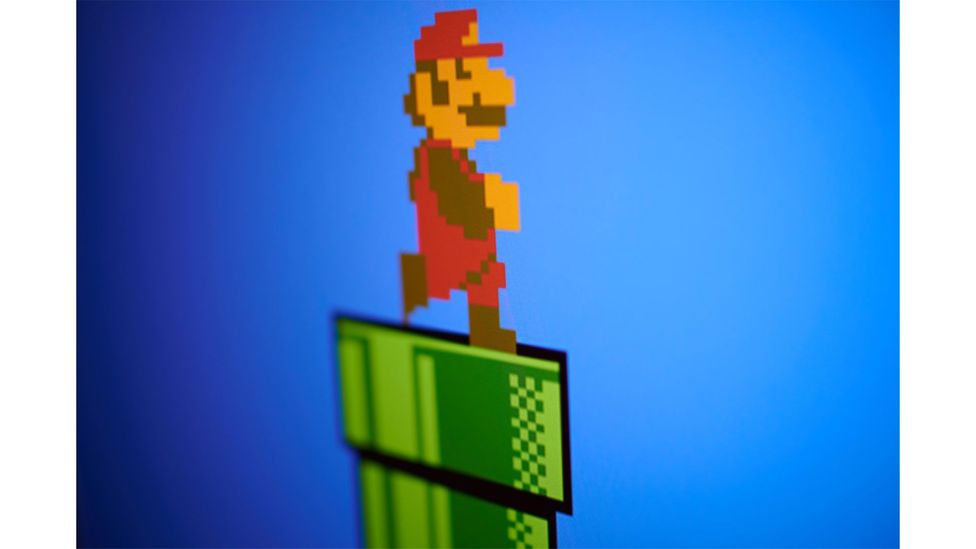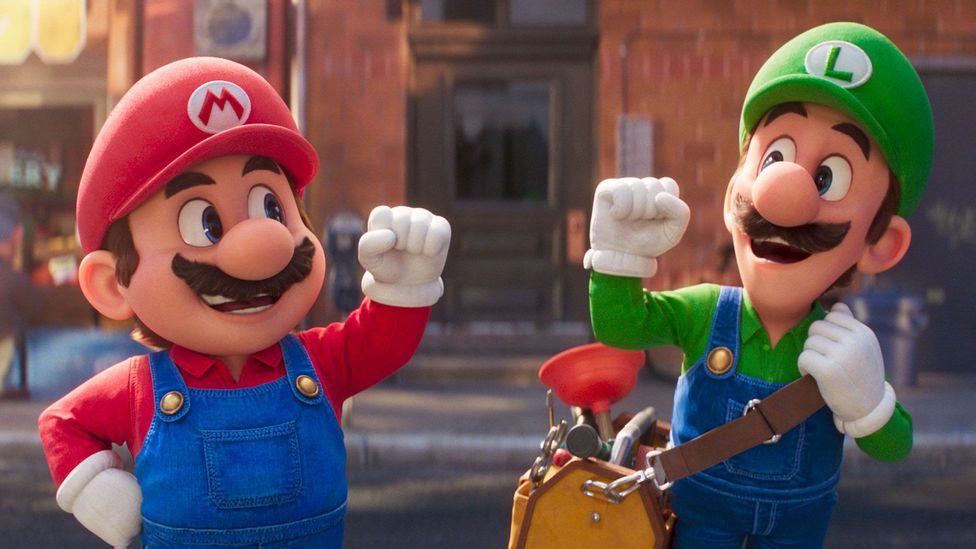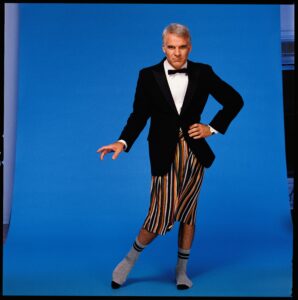The ultimate video game icon
Back in the mid-1980s, I was thrilled to unwrap a hi-tech gift for my ninth birthday: a handheld Game + Watch version of the arcade hit Donkey Kong. I played the game obsessively, captivated by its split screen liquid-crystal display, and the simple expressiveness of its hero character: a plucky monochrome figure called Mario, who would scale a construction site to rescue a captive princess. Mario had three lives in this platform game, but an apparently infinite appeal beyond it.
More like this:
– The 1991 video game that packs a punch
– The music most embedded in our psyches?
– How gaming became a form of meditation
Over the decades, Mario has appeared in more than 200 games, among them Nintendo’s original Mario Bros (which marks its 40th anniversary in March 2023), alongside his sibling Luigi, and the Mario Kart series (1992 onwards). His adventures have inspired multi-generational merch (toys, trading cards, designer kimonos), spin-offs including new animated feature The Super Mario Bros Movie, and theme park attractions. More than any other video-gaming character, Mario has steadily powered up from an arcade sprite to a household name and pop culture icon.
Mario’s now massive “everyman” presence stems from low-key beginnings. Prior to his 1981 debut in Donkey Kong, Mario had been called Ossan (Japanese for “middle-aged guy”), Mr Video and Jumpman in development; he was eventually named after the landlord of Nintendo’s US HQ. His creator, Shigeru Miyamoto, referenced global pop culture influences, envisioning a protagonist that could make recurring cameos across different games, rather like Alfred Hitchcock cropping up in the movies he directed. Mario’s original 8-bit design was instantly recognisable: stout, bright, bearing a distinctive cap and moustache; by the arcade release of Mario Bros (1983), his character was adapted, switching roles from carpenter to Italian-American plumber (reflecting that game’s landscape of pipes, as well as Miyamoto’s love of Western comics), while the controls remained intuitive.

Mario was switched from carpenter to plumber in the early games; creator Shigeru Miyamoto has called him ‘a blue-collar hero’ (Credit: Alamy)
“I think that Mario became so popular because the actions in the Mario game are something that are innate to humans everywhere,” Miyamoto told NPR in a 2015 interview. “Everyone is afraid of falling from a great height. If there is a gap that you have to cross, everyone is going to try to run to jump across… because of the simplicity of these experiences as well as the interactive nature of controlling the character and seeing the response on the game screen – that’s what really resonated with people.”
Mario is an unequivocal “good guy”, yet his form has been intriguingly fluid. His transformative qualities (and home console fame) became apparent in the pivotal Super Mario Bros (1985), where various Mushroom Kingdom items boosted his size and abilities. In his book The Ultimate History of Video Games Vol 1 (2010), Steven L Kent describes Mario as “the elder statesman of the gaming industry”, explaining that: “Super Mario Bros [1985] took Mario out of his single-screen setting and placed him in a huge vivid world… players now controlled him as he ran through a seemingly endless, brightly coloured countryside filled with caverns, castles, and giant mushrooms. The landscape was much too expansive to fit on a screen.”

The Super Mario Bros Movie, due to be released in April, stars Chris Pratt and Charlie Day as twin brothers Mario and Luigi (Credit: Nintendo/Universal Pictures)
Since then, Mario has remained an unmistakeable character across all kinds of incarnations, including a flying tanuki (Japanese raccoon dog, in Super Mario Bros 3, 1988) to a bee (in Super Mario Galaxy, 2007) and a cat (Super Mario 3D World, 2013). His roles have ranged from Dr Mario (for a 1990 puzzle game) to artist/composer (Mario Paint, 1992) and athlete (in racing, football, and tennis games, besides Nintendo/Sega crossover series Mario & Sonic at The Olympic Games). In Super Mario Odyssey (2017), even Mario’s cap took on a life of its own. Meanwhile, Mario’s surrounding cast has grown increasingly vast, yet even when these characters front their own games, they’re ultimately defined by their bond to him: as sibling (Luigi); sidekick (Princess Peach; Yoshi); or adversary (Donkey Kong; Bowser; Wario).
The sound of Mario has also proved a literal game-changer. Composer Koji Kondo’s now legendary music and movement effects have accompanied Mario’s quests since Super Mario Bros [1985], and US voice actor Charles Martinet has developed his cartoonish catchphrases (“Let’s-a-go!”), but even the first Mario Bros game featured snappy motifs that immediately bring the character to mind.
“That ‘coin drop’ sound – I think it’s just two very high keynotes – is so recognisable and simple,” says musician and founder of the London Video Game Orchestra, Galen Woltkamp-Moon. “Mario always looked iconic, even in very low-res pixel art, but I also remember being able to sing his soundtracks when I was maybe six or seven years old, which I couldn’t do with any other game at the time. The music is very accessible for all ages; it’s changed up every other bar or so, and it keeps the audience engaged.”
On the big screen
Translating a beloved videogame character to the movie screen has often proved risky, though there’s clearly a new wave of adaptations (including the rather limp Sonic the Hedgehog films). The live-action Super Mario Bros feature (1993) proved a clunky flop, despite a talented cast and high-end FX; Bob Hoskins played Mario, later describing the film as “the worst thing I ever did” (in a 2007 interview with The Guardian). In advance of its release, the new Super Mario Bros Movie has apparently provoked a fan backlash to Chris Pratt’s voice acting as CGI Mario, though co-director Aaron Horvarth insists it’s in the right spirit.
“When you play the game, if you don’t give up, Mario will succeed,” Horvarth told Total Film. “So we transferred that player experience from the game to a characteristic that [movie] Mario would have… [Chris Pratt] is really good at playing a blue-collar hero with a tonne of heart.”
Mario has endured in all kinds of realms, inspiring blockbuster appearances (as per Miyamoto’s original concept, he’s a playable character in numerous games including Super Smash Bros and Fortnite, and a background detail in many others) to internet memes (besides the surreal “Italian Elon Musk” parody account) and conceptual art. The US visual artist Cory Arcangel’s video installation Super Mario Clouds (2002) modifies Super Mario World; in 2015, an artist working under the pseudonym Samir Al-Mutfi created a “Syrian Super Mario” platform game, depicting the challenges faced by refugees seeking safety. Increasingly, Mario features in the collections of major galleries and institutions.
According to Kristian Volsing, a curator for Young V&A in London, Mario deserves to be in a museum. “Video games, as much as any other media, should be recognised for their cultural impact,” he tells BBC Culture. “Mario has been there right from the beginning of the video games revolution in the 1980s, and he’s more popular than ever as we get to the 40th anniversary.
“Mario is recognised all over the world – though he’s also quite a blank slate. And the amazing games design is meant to be a communal experience. You’ll also get titles like Super Mario Maker [a game with design tools, originally released in 2015]; it’s saying that everybody who plays these games already knows how they work, because they’re so involved with them.”
Mario brings generations together at play. Now my son is around the same age I was when I first encountered the character, and his own birthday wish-lists have included Super Mario Lego, or an updated Super Mario Bros Game + Watch. When we race each other at Mario Kart, we might not select Classic Mario (there are so many character options, including Metal Mario and Baby Mario), but the character remains a grounding force: a familiar friend in a crazy accelerated world.
Love film and TV? Join BBC Culture Film and TV Club on Facebook, a community for cinephiles all over the world.
If you would like to comment on this story or anything else you have seen on BBC Culture, head over to our Facebook page or message us on Twitter.
And if you liked this story, sign up for the weekly bbc.com features newsletter, called The Essential List. A handpicked selection of stories from BBC Future, Culture, Worklife and Travel, delivered to your inbox every Friday.















